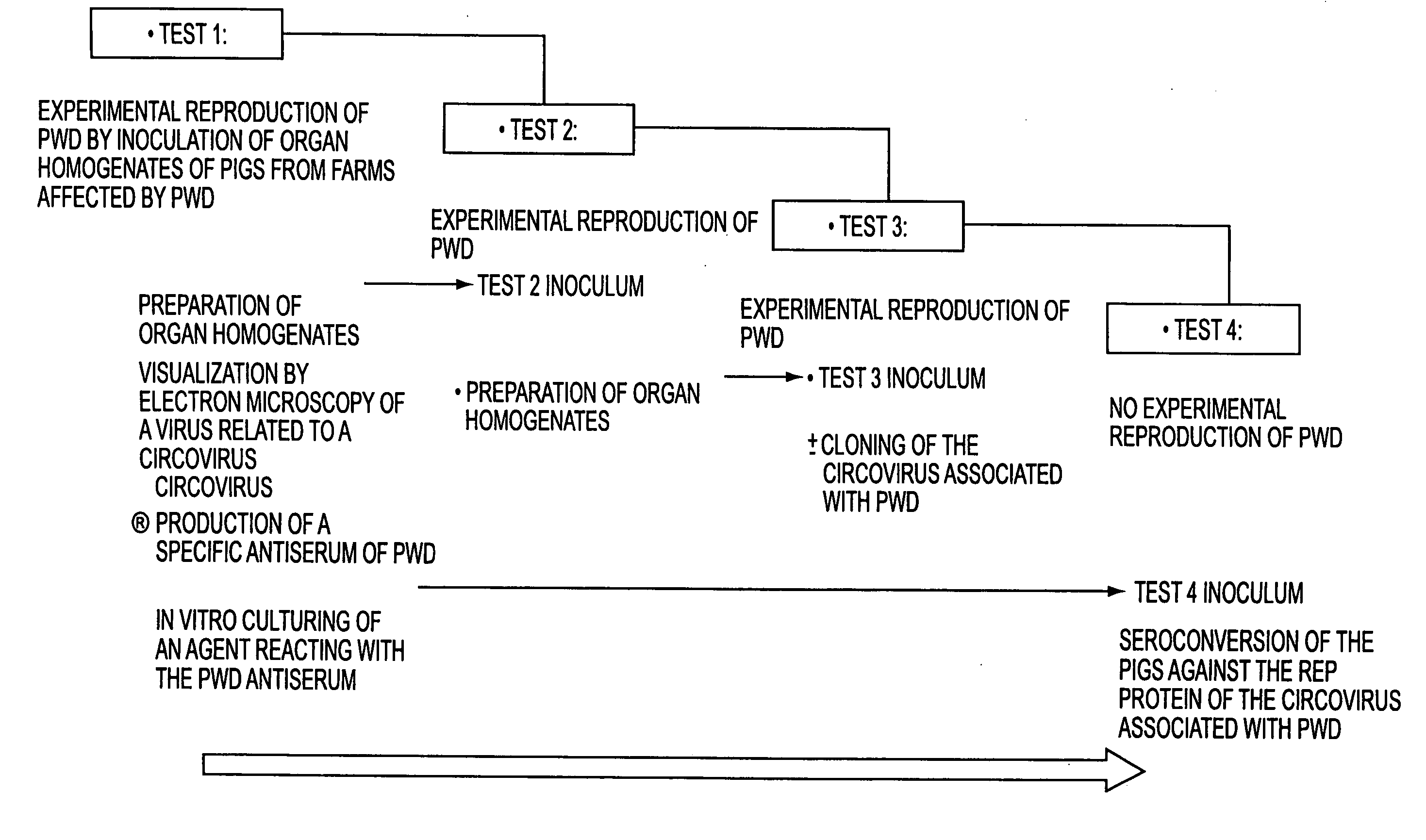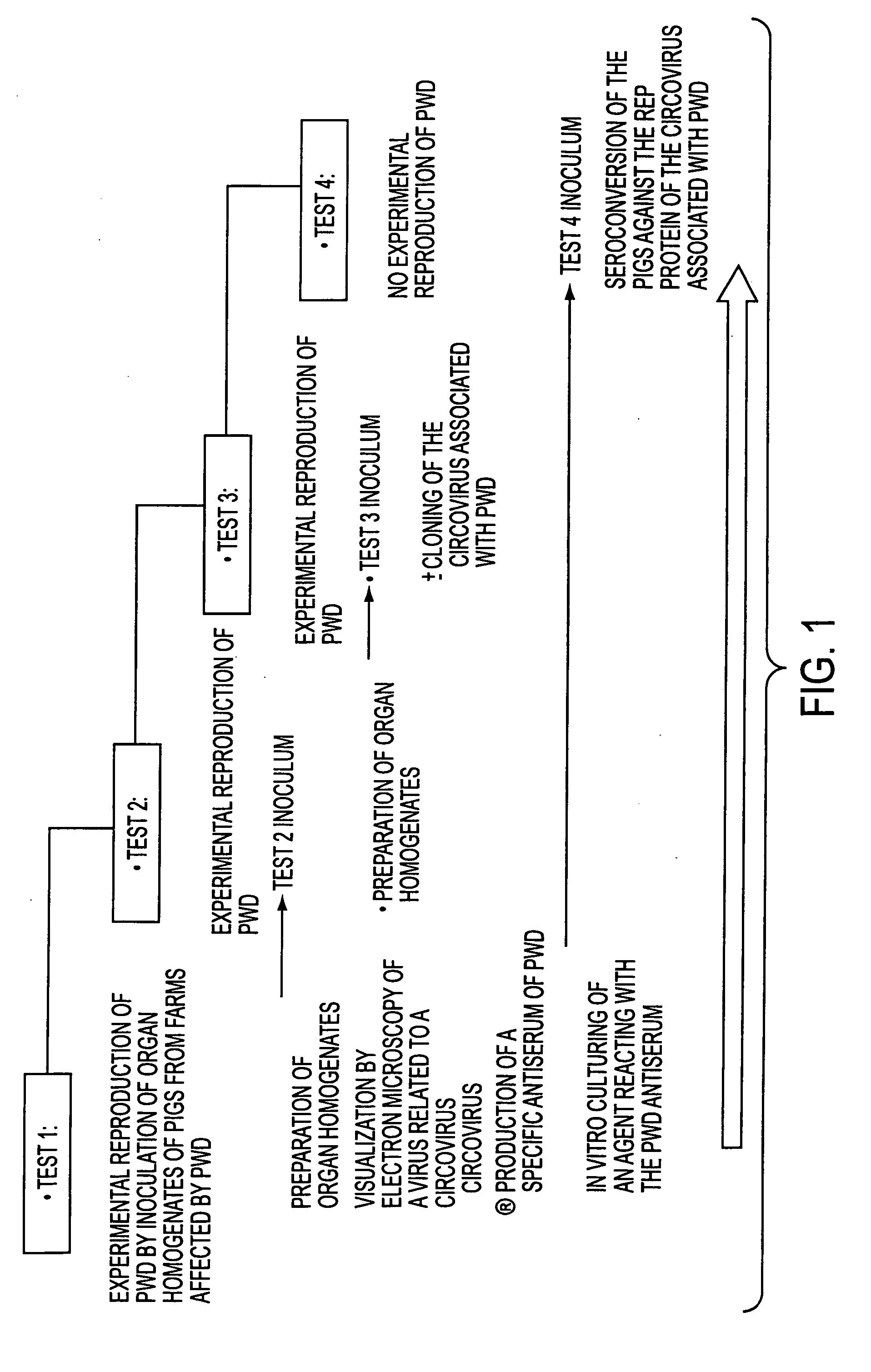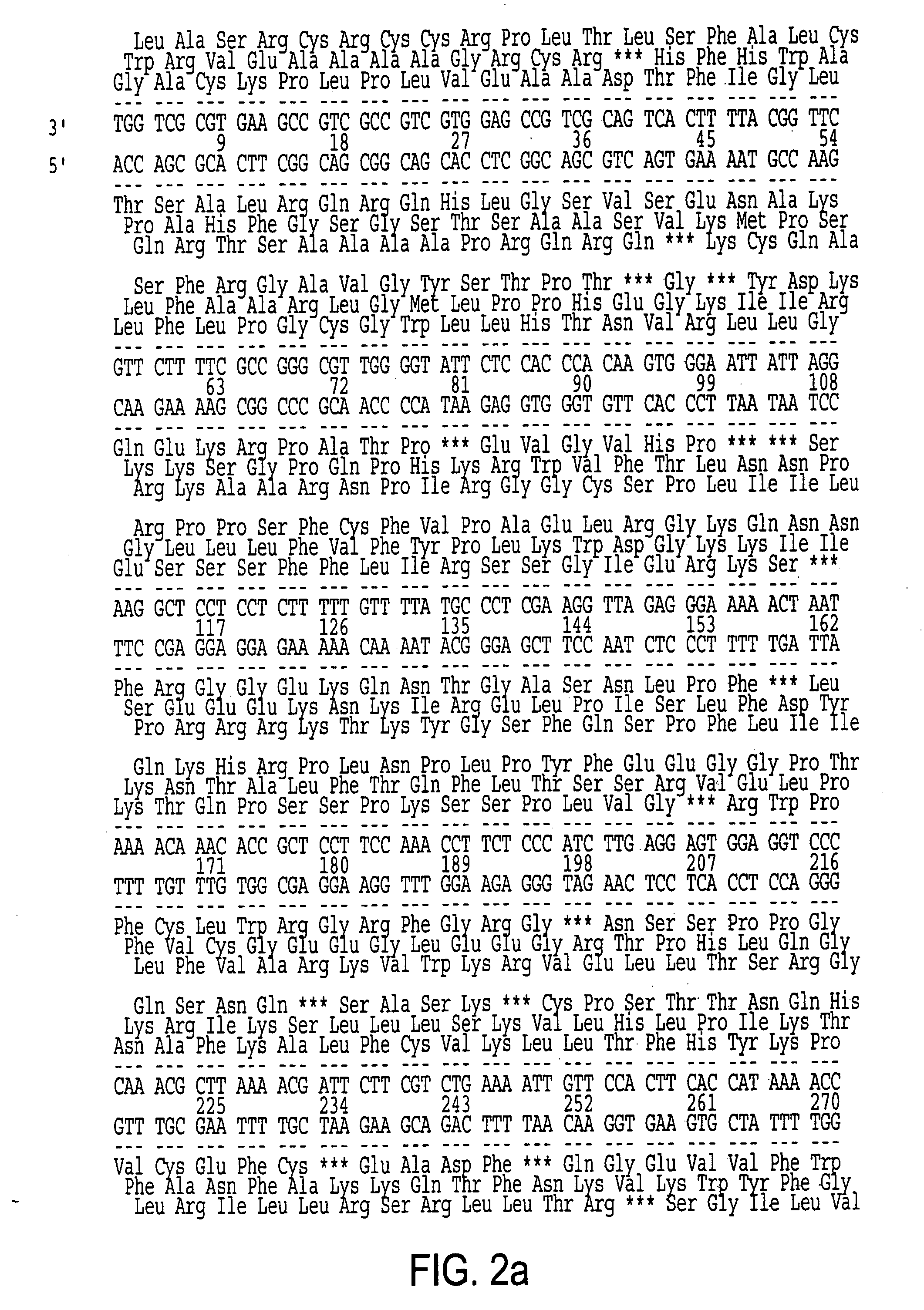Circovirus sequences associated with piglet weight loss disease (PWD)
a technology of circovirus and pwd, which is applied in the field of genetic sequence and nucleotide sequences coding for polypeptides of pwd circovirus, can solve the problems of disease, unfavorable piglet weight loss, and inability to evaluate the number of farms concerned with precision,
- Summary
- Abstract
- Description
- Claims
- Application Information
AI Technical Summary
Benefits of technology
Problems solved by technology
Method used
Image
Examples
example 1
Cloning, Sequencing and Characterization of the PWD Circovirus of Type A (PCVA)
[0358] 1. Experimental Procedures
[0359] Experimental reproduction of the infection and its syndrome are provided (cf. FIG. 1).
[0360] A first test was carried out with pigs from a very well-kept farm, but affected by piglet weight loss disease (PWD), likewise called fatal piglet wasting (FPW). Tests carried out with SPF (specific pathogen-free) pigs showed a transfer of contaminant(s) finding expression in a complex pathology combining hyperthernia, retardation of growth, diarrhea and conjunctivitis. The PDRS (porcine dysgenic and respiratory syndrome) virus, an infectious disease due to an arteriovirus) was rapidly isolated from breeding pigs and contact pigs. It should have been possible to attribute all the clinical signs to the presence of the PDRS virus. However, two farm pigs presented signs of FPW without the PDRS virus being isolated. The histological analyses and blood formulas, however, showed...
example 2
Cloning, Sequencing and Characterization of the Type B PWD Circovirus (PCVB)
[0420] The techniques used for cloning, sequencing and characterization of the type B PWD circovirus (PCVB) are those used in Example 1 above for the type A PWD circovirus (PCVA).
[0421] The nucleic acid sequence of the strand of (+) polarity of the genome of the PWD circovirus of type B (or PCVB) is represented by the sequence SEQ ID No. 15 in the sequence listing, the nucleic acid sequence of the strand of (−) polarity of the genome of the PWD circovirus of type B (or PCVB) being represented by the nucleic acid sequence 3′→5′ of FIG. 8 or by the sequence SEQ ID No. 19 (represented according to the orientation 5′→3′) in the sequence listing.
[0422] The amino acid sequences, SEQ ID No. 24, SEQ ID No. 26 and SEQ ID No. 28 of the sequence listing, respectively, represent the sequences of the proteins encoded by the nucleic sequences of the 3 open reading frames SEQ ID No. 23 (ORF′1), corresponding to the REP ...
example 3
Comparative Analysis of Nucleotide Sequences (ORF1, ORF2 and Genomic) and Amino Acid Sequences Encoded by the ORF1 and the ORF2 of the PWD Circoviruses of Type A (PCVA) and of Type B (PCVB)
[0423] The results expressed in % of homology are shown in Tables 3 and 4 below.
TABLE 3Compared analysis of the amino acid sequences% homologyORF1ORF2PCVA / PCVB80.456.2
[0424]
TABLE 4Compared analysis of the nucleotide sequences% homologyGenomicORF1ORF2The remainderPCVA / PCVB70.480.460.166.1
PUM
| Property | Measurement | Unit |
|---|---|---|
| temperature | aaaaa | aaaaa |
| temperature | aaaaa | aaaaa |
| temperature | aaaaa | aaaaa |
Abstract
Description
Claims
Application Information
 Login to View More
Login to View More - R&D
- Intellectual Property
- Life Sciences
- Materials
- Tech Scout
- Unparalleled Data Quality
- Higher Quality Content
- 60% Fewer Hallucinations
Browse by: Latest US Patents, China's latest patents, Technical Efficacy Thesaurus, Application Domain, Technology Topic, Popular Technical Reports.
© 2025 PatSnap. All rights reserved.Legal|Privacy policy|Modern Slavery Act Transparency Statement|Sitemap|About US| Contact US: help@patsnap.com



